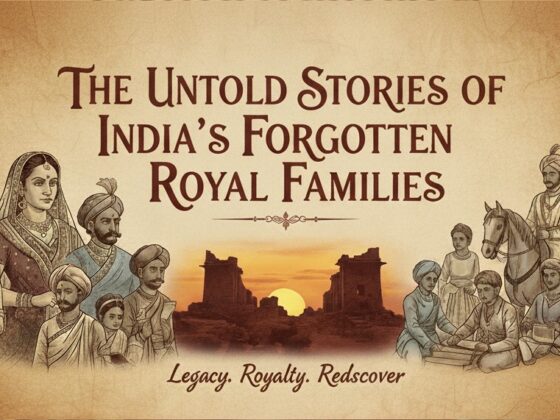The Royal Family of Jodhpur: A Legacy of Valor and Heritage

The Royal Family of Jodhpur has played a pivotal role in shaping Rajasthan’s history and cultural landscape. Known for their warrior spirit, governance, and patronage of arts, the rulers of Jodhpur have left an indelible mark on India’s royal heritage. Their legacy of valor, diplomacy, and tradition continues to inspire generations, making Jodhpur one of India’s most significant princely states.
Origins and Establishment of Jodhpur
The history of Jodhpur’s royal family dates back to the 13th century, with the Rathore dynasty tracing its roots to Rao Siha, the founder of the Rathore clan. However, it was Rao Jodha who established the city of Jodhpur in 1459 and fortified it with the magnificent Mehrangarh Fort. His leadership laid the foundation for a powerful kingdom that would grow in influence over the centuries.
Jodhpur’s strategic location on the trade routes between Delhi and Gujarat allowed the kingdom to flourish economically. The rulers of Jodhpur maintained strong political and trade relations, ensuring the prosperity of their region.
Notable Rulers of Jodhpur
Several rulers of Jodhpur played significant roles in shaping the state’s history:
- Rao Jodha (1416–1489): Founder of Jodhpur, he laid the foundation of Mehrangarh Fort, establishing Jodhpur as a major power.
- Maharaja Jaswant Singh I (1638–1678): A loyal ally of the Mughal Emperor Aurangzeb, he played a crucial role in maintaining stability in Rajasthan.
- Maharaja Ajit Singh (1679–1724): He fought to restore Jodhpur’s independence from Mughal rule, successfully reclaiming the kingdom.
- Maharaja Takht Singh (1843–1873): Modernized Jodhpur and contributed to administrative and infrastructural development.
- Maharaja Umaid Singh (1918–1947): Renowned for constructing Umaid Bhawan Palace, one of the largest private residences in the world.
The Royal Family During British Rule
During British rule, the Jodhpur royal family played a diplomatic role while retaining their autonomy. Jodhpur was among the largest princely states in British India, and its rulers enjoyed a close association with the British crown.
Maharaja Umaid Singh initiated progressive reforms in the early 20th century. He focused on infrastructure, aviation, and education, ensuring Jodhpur’s development. His efforts led to the construction of the Jodhpur Airport, further solidifying the city’s strategic importance.
Post-Independence Era and Modern Influence
After India’s independence in 1947, Maharaja Hanwant Singh agreed to merge Jodhpur with the Indian Union. Although the princely states were abolished, the royal family continued to play a cultural and social role.
Today, the descendants of the Jodhpur royal family, including Gaj Singh II, remain custodians of the region’s history. The family is actively involved in heritage conservation, tourism, and cultural preservation. They oversee the management of Mehrangarh Fort and Umaid Bhawan Palace, both of which serve as major attractions and symbols of Rajasthan’s grandeur.
Cultural and Architectural Contributions
The Jodhpur royal family has left behind an extraordinary architectural and cultural legacy:
- Mehrangarh Fort: One of India’s most formidable forts, showcasing Rajput architecture and historical artifacts.
- Umaid Bhawan Palace: A blend of Indo-Saracenic and Art Deco styles, this palace remains an architectural marvel.
- Mandore Gardens: The historic site of the Rathore dynasty’s early capital, featuring intricately designed cenotaphs.
- Jaswant Thada: A beautiful white marble memorial dedicated to Maharaja Jaswant Singh II.
Their patronage extended to the arts, with Jodhpur becoming a hub for Rajasthani music, dance, and handicrafts. The royal family has played a significant role in preserving traditional Rajasthani culture, which continues to thrive in festivals, museums, and heritage tourism.
The Royal Family’s Role in Modern Rajasthan
Despite the end of their official rule, the Jodhpur royal family remains influential in Rajasthan’s cultural and tourism sectors. Gaj Singh II, the current head of the family, has actively worked to promote heritage conservation, education, and tourism in Jodhpur.
The family hosts RIFF (Rajasthan International Folk Festival) and supports various cultural initiatives to keep Rajasthan’s traditions alive. Umaid Bhawan Palace, now partly a luxury hotel, continues to be a symbol of royal hospitality and grandeur.
Conclusion
The Royal Family of Jodhpur stands as a testament to Rajasthan’s rich history, cultural heritage, and resilience. Their legacy continues to inspire, with their contributions shaping Jodhpur’s identity as the “Blue City” and a premier heritage destination in India. From warriors and statesmen to patrons of art and culture, their story remains an integral part of India’s royal heritage, making Jodhpur a jewel in Rajasthan’s crown.








